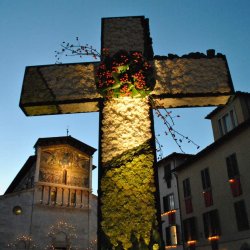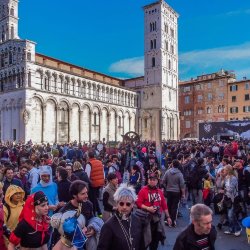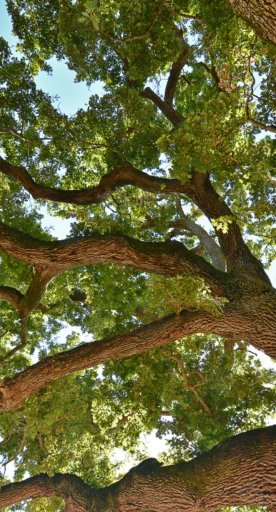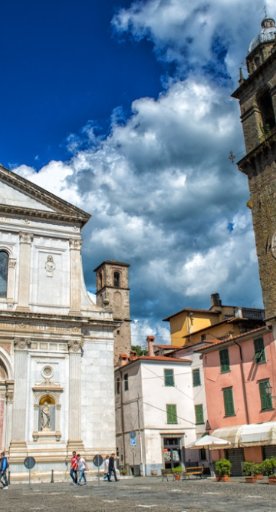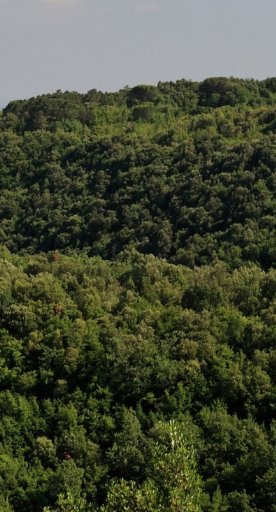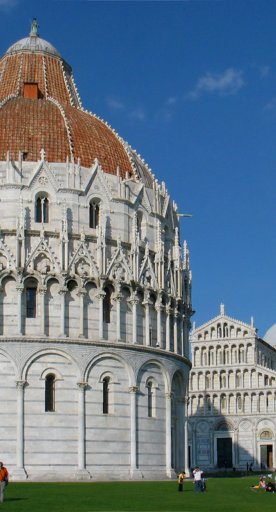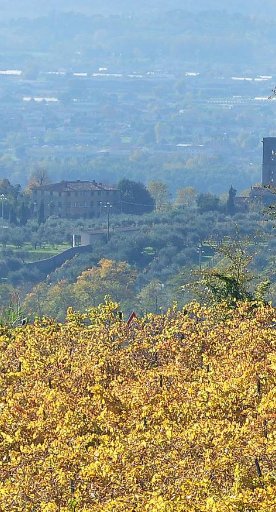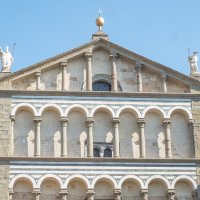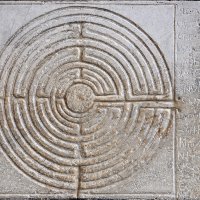Of pilgrims and devotion: relics on the Tuscan Via Francigena
Created as a pilgrimage route, the Via Francigena has always been the custodian of precious relics, objects that belong to faith as well as history
For centuries, the Via Francigena was an important communication route, traveled by merchants but also by the many worshippers who traveled to Rome and continue to do so, driven by a strong devotion.
It was not unusual for pilgrims also to pay homage to the relics they encountered along the way: even today, the churches that stand along this ancient route still preserve sacred objects, important evidence of a religious and cultural tradition.
-
1.Relics in cities of art
-
2.Relics in the hamlets
Relics in cities of art

The cities that mark the stops of the Via Francigena are home to relics of great historical value. One example is the Holy Face, the oldest wooden statue in the entire West: of great artistic as well as religious interest, this crucifix is found inside the Cathedral of San Martino in Lucca enclosed in a 15th century small temple. Its creation is officially dated between the late 7th and early 8th century; tradition has it that Nicodemus, a disciple of Jesus, carved the entire statue except for the head. The latter part was miraculously completed overnight, representing the true face of Christ.
The Holy Face is adorned with precious jewelry during the annual feast that celebrates it. These remarkable goldsmith works can be admired in the Cathedral museum.

In Siena it is possible to visit numerous churches where the memory and remains of great personalities of the religious community have been venerated for centuries. Indeed, it is precisely in the city of the Gothic that the right arm of St. John the Baptist, the same one that baptized Jesus, is found: the relic was donated to the city by Pope Pius II Piccolomini in the 14th century, and at the same time, the chapel that still preserves it was built. The arm is housed in the Siena Cathedral, surrounded by works of great artistic value bearing the signatures of Donatello and Pinturicchio.
In the Basilica of San Domenico, the remains of St. Catherine, patron saint of Italy and Europe, have found a safe place: the saint's head and finger are displayed here, always surrounded by devout visitors who pay their respects to her; her personal effects, on the other hand, are found at the sanctuary, the former home of Caterina Benincasa, later sanctified.
In addition to this, in Siena it is possible to go to the Basilica of St. Francis, where the Sacre Particole (Sacred Particles), miraculous hosts immune to the passage of time, are kept.
Relics in the hamlets
Villages and towns are also centuries-old custodians of precious sacred objects. The Cathedral of Sarzana (in Liguria) displays the relic of the Preziosissimo Sangue (Precious Blood), which tradition recognizes as the blood of Jesus, collected on Mount Calvary. According to the same belief, the blood arrived on the shores of Lunigiana together with the Holy Face; the crucifix was immediately transferred to Lucca, while the ampulla with the fluid remained for some time in Luni, becoming an object of worship and a pilgrimage destination, before being moved to Sarzana.
In Pietrasanta, the Cathedral of San Martino is home to the relics of the healer saint San Biagio, placed inside an 18th century bust, while the Cathedral of Colle Val d'Elsa preserves the Sacro Chiodo (Holy Nail) that allegedly pierced Jesus' left foot. The nail measures about 22 cm and on the bent tip it bears the inscription INRI; it is customary to believe that the nail was collected with the others by St. Helena, mother of the Emperor Constantine, and that through her it came to Italy, while its belonging to the Valdelsa village is due to the bequest of a French bishop.

Amid the woods that cover Mount Amiata and a short distance from the summit, the Abbey of San Salvatore in Abbadia San Salvatore has long been a pilgrimage destination: for nearly a millennium the church housed the Codex Amiatinus, the oldest manuscript copy of the Bible in Latin, a replica of which remains today in the abbey museum. Still in the religious building, instead, is the Scotus-Irish Coffer, a unique small reliquary: its shape and chiseled wooden construction recall the style of reliquaries found in Scotland and Ireland, but the metal edging is unusual; inside it are bones, which likely belonged to an Irish abbot active in Italy in the seventh century. Finally, a wooden crucifix, probably carved by a pilgrim during his journey along the Via Francigena, is displayed in the Abbey of San Salvatore.






